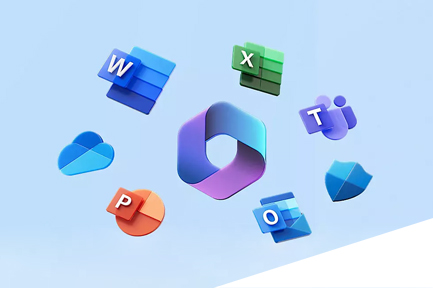Unlocking the Potential: A Deep Dive into Microsoft Copilot
Did you know that Microsoft 365 is used by over a million companies globally? In the United States alone, an impressive 145,000+ customers rely on...
2 min read
![]() Zones
:
Jul 29, 2024 11:43:13 AM
Zones
:
Jul 29, 2024 11:43:13 AM

When you check the news, it seems like every other headline is about a data breach at a big tech company scrambling to recover. It’s becoming all too common. Hackers always find a way in, no matter how hard companies try to protect their fort.
So, why does this keep happening again and again? The answer is simple. As more companies move to cloud-powered infrastructures, their traditional security strategies just aren't cutting it. We're holding on to outdated ideas of "trust" within the network, leaving significant gaps for hackers to exploit.
For today’s modern work models, a proactive approach to security is no longer optional—it's essential. This is where Zero Trust, championed by Microsoft, comes into play. Zero Trust operates on one main principle: trust no one, always verify. It emphasizes that everyone—employees, contractors, and even devices—must be authenticated every time they try to access something. They need to identify themselves properly and justify their authorization before being granted access, and even then, it's only limited to specific areas as required.
Consider Microsoft’s Zero Trust model as a 24/7 security framework that constantly monitors activity and looks for suspicious behavior to stop potential threats before they cause any damage. This approach is crucial for protecting the most critical cloud infrastructure, where the stakes are high and the cost of a breach can be catastrophic.
Let’s look at why the Zero Trust model is a must-have for your cloud infrastructure.
As technology evolves, so does the complexity of cyber threats. Attackers are always on the hunt for loopholes in security systems, and old measures like perimeter-based defenses can no longer hold the ground. By implementing Zero Trust measures in your system, you introduce an enhanced and adaptive security framework that makes your resources resilient, regardless of location or network.
Resources in cloud environments are constantly changing, being created and removed based on demand. Traditional security models, primarily static, struggle to keep up with this rapid pace, leaving gaps and vulnerabilities. Zero Trust is built for agility, ensuring your organization can apply consistent and robust security policies across your dynamic cloud infrastructure, keeping your data and systems safe no matter how quickly things change.
Industries like healthcare and finance have stringent regulatory compliance requirements for data security and privacy. Zero Trust provides a framework that helps meet these regulatory controls and measures, reducing the risk of noncompliance penalties and reputational harm.
Critical cloud infrastructures house vast amounts of data, including confidential customer information, intellectual property, and financial records. Breaches or leaks can have detrimental consequences, especially for companies in healthcare and finance. Zero Trust enables organizations to protect sensitive data through encryption in motion and at rest, least-privilege access controls, and visibility over access attempts. This ensures that your information remains uncompromised and that your company has a solid guardian at the front.
Organizations are always at risk of security breaches. Standard perimeter-based security measures are not strong enough to keep malicious insiders or compromised accounts at bay. Zero Trust takes infiltrations seriously, placing strict access controls and constantly monitoring for suspicious activity both inside and outside the organization's network, eliminating even the slightest chance of a security compromise.
Organizations shifting to cloud infrastructures need to stay vigilant against security threats. The Zero Trust approach sharpens your defense mechanisms against sophisticated attacks, secures dynamic cloud environments, and properly thwarts insider risks to protect your data. In this age of constant advancements, Zero Trust establishes resilience and trust within our cloud infrastructures.
Additionally, setting up multi-factor authentication (MFA) for users whenever they access organizational resources can reduce the effectiveness of identity attacks by up to 99%.
One final word: don’t take your organizational security for granted. You might think you have a rock-solid system, but today’s hackers are more capable than ever. Just one breach can take down your entire operation. Before things come crashing down, leverage Microsoft’s Zero Trust model and conquer every attack, no matter how complex. If not, you might find yourself as the next big headline.

Did you know that Microsoft 365 is used by over a million companies globally? In the United States alone, an impressive 145,000+ customers rely on...

Even though there is a constant change in the rules and regulations in the business environment, a significant problem appears in the form of...

1 min read
In this modern era, enterprises are putting more emphasis on data center transformation than ever before. With so many employees today operating out...